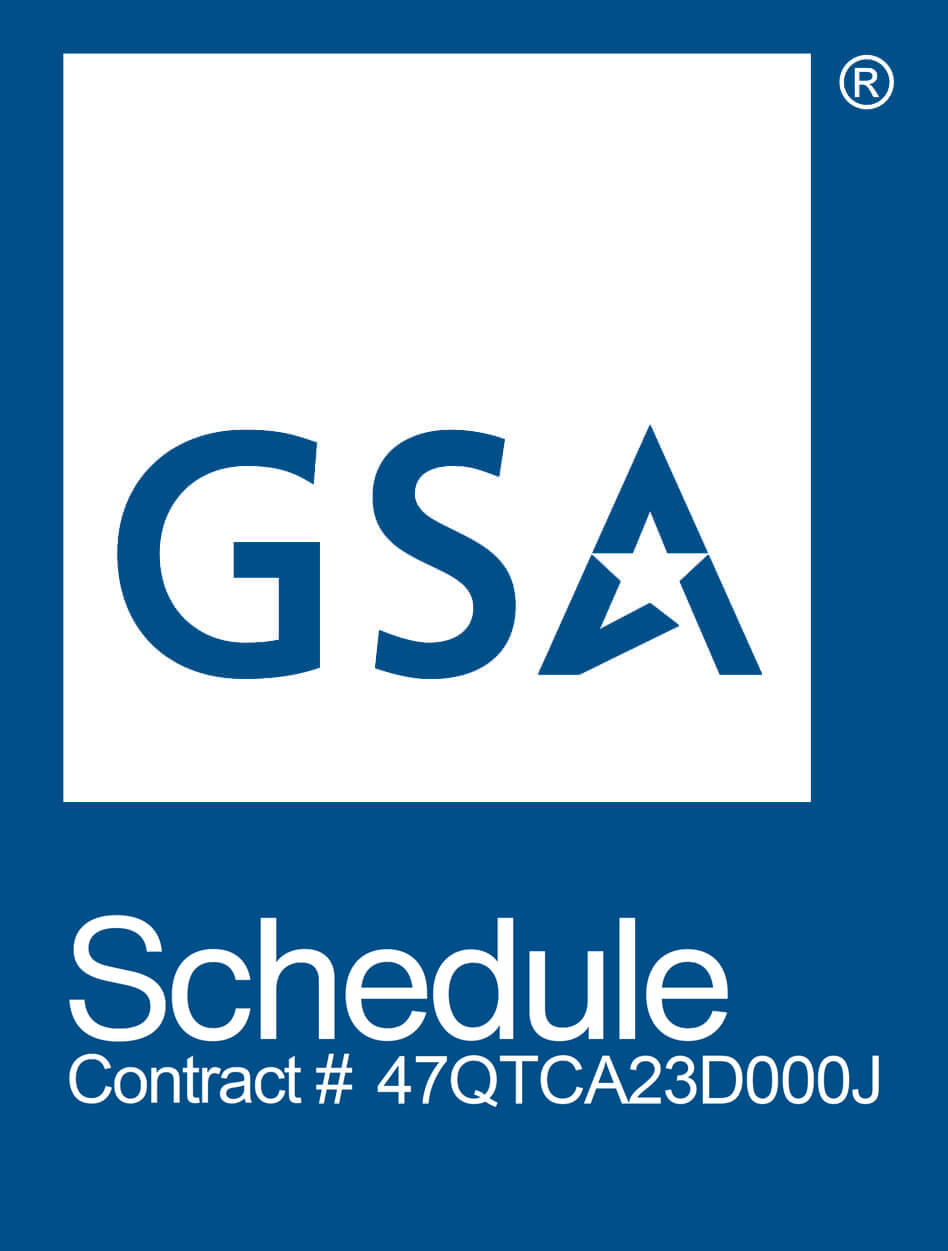
Application Rationalization Solutions And What They Can Do For Your Business
In business, there is often a need to make changes in order to stay competitive. One way to do this is through application rationalization. This process can help organizations reduce the number of applications they use and can increase efficiency and improve performance. There are several solutions that can help with application rationalization, and each offers its own benefits. In this blog post, we will explore the different options available and discuss how each can help businesses achieve their goals. We’ll also look at some case studies to see how these solutions have been used in the past. By understanding the options available, businesses can make an informed decision about which solution is right for them. If your business operates in Tempe, Arizona, or anywhere else in the United States, contact CCT today to significantly enhance your IT and cloud capabilities.
Application rationalization solutions can help your Tempe, Arizona, business in a number of ways. By reducing the number of applications you use, you can save money on licensing and support costs. You can also reduce the amount of time your IT staff spends maintaining and troubleshooting applications. In addition, by consolidating applications, you can improve security and compliance with industry regulations.
There are a number of application rationalization solutions available on the market today. One popular solution is Microsoft App-V. App-V allows you to package applications into virtual machines, which can then be deployed on any supported platform. This means that you can run multiple versions of an application on the same machine, making it ideal for testing and development purposes. Another popular solution is Citrix XenApp. XenApp allows you to manage and deliver applications to users centrally. It includes a number of features, such as application streaming, which can help reduce the amount of time required to deploy applications.
If you are looking for an application rationalization solution, it is important to consider your specific needs. There is no one-size-fits-all solution, so it is important to select a solution that will work best for your organization. Be sure to consider the cost, complexity, and features of each solution before making a decision. By taking the time to evaluate your options, you can ensure that you select the best application rationalization solution for your Tempe, Arizona, business.
What is Application Rationalization and How It Works
Application rationalization is the process of identifying and evaluating the business value of an organization’s existing applications. This process helps organizations to make informed decisions about which applications to keep, retire, or replace.
There are many factors that need to be considered when rationalizing an application portfolio. Some of these include:
- The cost of maintaining the application
- The age of the application
- The number of users who rely on the application
- The business value the application provides
Organizations typically use a combination of automated tools and manual processes to assess their application portfolios. Once the assessment is complete, decision-makers can then make informed decisions about which applications to keep, retire, or replace.
Application rationalization is an important part of keeping an organization’s IT infrastructure up-to-date and efficient. By regularly reviewing and updating the applications that are being used, organizations can avoid costly application sprawl and ensure that their resources are being used in the most effective way possible.
Service-Disabled Veteran-Owned Small Business (SDVOSB)
Which Business Problems and Challenges Can Application Rationalization Solve?
Application rationalization can provide solutions to a number of business problems and challenges, including:
- Too many applications: Having too many applications can lead to inefficiencies, duplication of effort, and increased costs. Application rationalization can help reduce the number of applications by identifying and consolidating duplicative or unnecessary applications.
- Outdated applications: Outdated applications can cause security risks and impede business agility. Application rationalization can identify outdated applications and recommend replacement or upgrade options.
- Lack of integration: Lack of integration among applications can lead to data silos and inefficiencies. Application rationalization can assess the integration needs of an organization and recommend solutions.
- Poor performance: Poorly performing applications can lead to user frustration and decreased productivity. Application rationalization can help identify the root cause of performance problems and recommend solutions.
- High maintenance costs: High maintenance costs can be caused by a number of factors, including outdated applications, lack of integration, and poor performance. Application rationalization can help reduce maintenance costs by identifying and addressing these underlying issues.
- Lack of governance: Lack of governance over application portfolios can lead to uncontrolled growth and increased risk. Application rationalization can help establish governance processes and practices that can help control application portfolios.
- Other business challenges: In addition to the above, application rationalization can also help solve other business challenges, such as improving customer satisfaction or reducing operational costs.
Application rationalization can provide benefits to Tempe, Arizona organizations of all sizes. However, it is important to note that application rationalization is not a silver bullet solution and should be part of a broader strategy that takes into account the unique needs of the organization. When done correctly, application rationalization can help organizations improve efficiencies, reduce costs, and improve business agility.
Features of Application Rationalization
There are many features of application rationalization that can be beneficial to organizations. Some of these features include:
- Standardization: This can help to reduce the number of different types of applications being used within an organization, which can make it easier to manage and support these applications.
- Reduced Costs: By reducing the number of different applications being used, organizations can see cost savings in terms of licensing, maintenance, and support.
- Improved Efficiency: Having fewer applications can help to improve efficiency by reducing the need for training users on different systems and simplifying the process of data entry and retrieval.
- Increased Security: With fewer applications in use, there is less risk of unauthorized access or data breaches. Additionally, having fewer applications can make it easier to implement security measures and keep track of who has access to which systems.
- Increased Flexibility: Having fewer applications can make it easier to add or remove functionality as needed and to customize applications to meet the specific needs of the organization.
Application rationalization can be a helpful way for organizations to streamline their operations and improve their overall efficiency. By taking advantage of the benefits that application rationalization can offer, organizations can reduce costs, improve security, and increase their flexibility.

Transforming for Innovation, Sustainability and Security
Areas That Application Rationalization Help Streamline
Here are business areas that application rationalization help streamline:
Inventory Management
Having too many applications can make it difficult to keep track of them all, leading to inefficiencies and wasted time and resources. Application rationalization can help simplify inventory management by reducing the number of applications that need to be tracked.
Maintenance and Support
Too many applications can also lead to increased maintenance and support costs. By eliminating unnecessary or redundant applications, organizations can save on these costs.
Training
When there are too many applications, it cannot be easy to train users on all of them. This can lead to inefficiencies and wasted time and resources. Application rationalization can help simplify training by reducing the number of applications that need to be learned.
Security
Having too many applications can also increase security risks. By eliminating unnecessary or redundant applications, organizations can reduce these risks.
Compliance Management
Organizations often struggle with maintaining compliance with various regulations. This is especially true for those in heavily regulated industries, such as financial services, healthcare, and energy. There are a number of reasons for this, but one of the biggest is the sheer number of applications that need to be managed.
Application rationalization can help ease the burden of compliance management by helping organizations understand which applications are mission-critical and which can be retired or replaced. This process can also help identify duplicate functionality so that organization can consolidate their application portfolio.
In addition, application rationalization can help identify opportunities for automating manual processes. This can further reduce the risk of non-compliance by reducing human error. Finally, application rationalization can help create a roadmap for compliance-related upgrades and changes so that they can be implemented in a controlled and managed manner.
While application rationalization is no silver bullet for compliance management, it can be a valuable tool in helping organizations get a handle on their compliance obligations.
Enterprise Architecture
One of the most important aspects of enterprise architecture is application rationalization. This process helps organizations identify which applications are critical to their business operations and then determine how best to deploy and manage them. Application rationalization can also help to improve application performance and reduce costs by identifying and eliminating unnecessary or duplicate applications.
In order to effectively rationalize its applications, an organization must first understand its current application portfolio. This includes understanding the purpose of each application, how it is used, and how it fits into the overall Tempe, Arizona, business operation. Once this information is gathered, the organization can begin to identify which applications are no longer needed or could be replaced with more efficient alternatives.
Application rationalization can be a complex and time-consuming process, but it is essential for ensuring that an organization’s enterprise architecture is effective and efficient. By taking the time to assess and understand its current application portfolio carefully, an organization can make sure that it is using the right applications to support its business operations and improve its overall performance.
Generative AI Software Development
Boost your business efficiency with our custom Generative AI Business Software, tailored for HR, finance, sales, event management, and customer service. Leveraging advanced natural language processing and AI-driven data science, we specialize in customer segmentation, sales analysis, and lead scoring. Elevate your operations and gain a competitive advantage with our precision-driven AI solutions. Contact us to integrate AI seamlessly into your key systems and transform your business.
Small Disadvantaged Business (SDB)
Small Disadvantaged Business leads to enhanced innovation and creativity, as these businesses often offer unique perspectives and solutions shaped by their diverse backgrounds. Moreover, partnering with Small Disadvantaged Business can provide access to specialized skills and capabilities that might otherwise be overlooked, contributing to improved competitiveness and efficiency.
Transforming for Innovation and Sustainability securing future competitive advantage
Mergers & Acquisitions
When two companies merge, there is often a lot of duplicate work that needs to be consolidated. This includes application rationalization or the process of streamlining and consolidating applications across the new enterprise.
Application rationalization is a key part of post-merger integration (PMI) and can help reduce costs, improve efficiency, and create a more agile organization. While it can be a challenging process, there are many ways to make it successful.
Here are some tips on how application rationalization can help with mergers and acquisitions:
- Define the goals and objectives for application rationalization upfront. What are the desired outcomes? What cost savings need to be achieved? What efficiencies need to be gained?
- Take an inventory of all applications across both companies, and classify them according to business function. This will help to identify duplicate or redundant applications.
- Evaluate each application according to its business value and cost of ownership. What are the benefits of keeping an application? How much will it cost to maintain?
- Create a roadmap for application rationalization, with timelines and milestones. This will help to keep the project on track and ensure that goals are met.
- Implement a governance framework to manage the application rationalization process. This will ensure that decisions are made in a consistent and transparent manner.
- Communicate regularly with all stakeholders throughout the process. Keep everyone updated on progress and ensure that they understand the decisions being made.
- Be prepared to make changes to applications, processes, and infrastructure. Application rationalization can have a significant impact on the IT landscape.
- Review the results of application rationalization periodically. What has been achieved? Are there any areas that need further improvement?
Vendor Management
Application Rationalization can help with Vendor Management in a few ways. First, it can help identify which applications are no longer needed or are duplicates of other applications. This can help reduce the number of vendors that need to be managed. Second, it can help identify which applications are critical to the business and which are not. This can help prioritize vendor management efforts and ensure that critical vendors are managed effectively. Finally, application rationalization can help identify opportunities for consolidating vendors and reducing costs. By consolidating vendors, organizations can reduce the number of contracts they need to manage, simplify billing, and reduce negotiation costs.
Business Process Management
Application rationalization can help with Tempe, Arizona, business process management by identifying which applications are necessary and which can be eliminated. This can streamline the process and make it more efficient. Additionally, application rationalization can help to identify gaps in the process and improve communication between different departments.
Outsourcing
Organizations that are outsourcing their business functions need to consider how they will Rationalize their Applications carefully. This is because the provider will likely have different application capabilities and architecture than what the organization is currently using. A well-planned application rationalization can help to avoid or reduce integration issues, support better decision-making about which applications to outsource, and improve the overall quality of the outsourcing service.
There are four key steps in application rationalization:
- Identify which applications are critical to business operations and which can be safely outsourced.
- Assess the current state of each application, including its functionality, performance, and security.
- Develop a plan for migrating or retiring each application, taking into account the provider’s capabilities.
- Implement the rationalization plan and monitor results to ensure desired outcomes are achieved.
By taking these steps, organizations can ensure that they are making informed decisions about which applications to outsource and can avoid or reduce integration issues. Additionally, this process can help to improve the overall quality of the outsourcing service.
Audit Management
Application rationalization can help with audit management in several ways. First, it can help identify which applications are critical to the organization and which are not. This information can then be used to prioritize audits and focus resources on the most important applications. Second, application rationalization can help identify gaps in coverage and ensure that all auditable events are captured. Finally, application rationalization can help improve the accuracy of audit reports by identifying and correcting errors in the data collected.
Benefits Of Application Rationalization Solutions
Here are some of the benefits of Application Rationalization:
Reduce IT Cost
Application rationalization is the process of identifying, evaluating, and selecting applications within an organization in order to improve efficiency and reduce costs. The goal of application rationalization is to produce a portfolio of business-critical applications that are well-supported and aligned with the business goals of organizations in Tempe, Arizona.
Application rationalization typically begins with an inventory of all applications in use within the organization. This inventory should include information on the purpose of each application, who uses it, how it is used, and how critical it is to business operations. Once this inventory is complete, organizations can begin to evaluate which applications are essential and which can be retired or replaced.
Organizations should consider several factors when evaluating applications, including cost, functionality, technical support, and business alignment. Cost is often the most important factor as organizations seek to reduce IT spending. Functionality is also important, as organizations want to ensure that applications are meeting business needs. Technical support is another key consideration, as organizations need to be able to maintain and update applications over time. Business alignment is also crucial, as applications must be aligned with organizational goals in order to be considered essential.
Application rationalization can be a complex and time-consuming process, but it is essential for reducing IT costs and ensuring that only essential applications are being supported. By taking the time to inventory all applications and evaluate their costs, functionality, technical support, and business alignment, organizations can make informed decisions about which apps to keep and which to retire or replace. In the end, application rationalization will save organizations time and money while ensuring that Tempe, Arizona, business needs are being met.
What clients say about Cloud Computing Technologies
★★★★★ 5/5
"CCT's diverse skills and expertise has reduced our technical debt by millions of dollars to which we have reinvested into future capabilities."

Mrs. Hanson
★★★★★ 5/5
"With CCT migrating our critical systems into the AWS, 80% our staff is now remote working."

Mrs. Miller
★★★★★ 5/5
"CCT showed us how to meeting regulatory compliance in AWS Landing Zone and greatly improved our cloud security controls."

Mrs. Wilson
★★★★★ 5/5
"CCT provided our agency with application rationalization services and successfuly applicaton migrations meeting all KPIs and SLAs."

Federal Agency
★★★★★ 5/5
"I highly recommend the data science team at CCT. They are technically proficient, great communicators, unbiased, and reduced our false positives by 68%."

Mr. Brown
★★★★★ 5/5
"The team at CCT is knowledgable and insightful in developing a cloud architecture leading to our mission success."

Mr. Robinson
Reduce Complexity
Application rationalization can help reduce complexity, improve efficiency, and free up resources that can be better used elsewhere.
There are many reasons why an organization might have too many applications. In some cases, new applications are created to solve specific problems without considering whether there are existing solutions that could be used instead. In other cases, departments or divisions within an organization may develop their own separate solutions to similar problems, leading to duplicate or overlapping functionality. Over time, as business needs change, some applications may become unnecessary or obsolete while others become essential.
Application rationalization can be a complex and daunting task, but it is essential for reducing complexity and achieving greater efficiency. The first step is to inventory all of the applications in use within an organization. This can be a difficult process, as many organizations do not have a complete or accurate picture of all the applications they are using. Once all of the applications have been identified, they can be categorized according to their business purpose.
After applications have been inventoried and categorized, it is time to assess which ones are essential and which ones can be eliminated. To make this assessment, various factors must be considered, such as the cost of maintaining the application, its strategic importance, how well it meets the business needs of organizations in Tempe, Arizona, and whether there are alternative solutions that would serve the same purpose. After this assessment has been completed, a decision can be made about which applications to keep and which ones to eliminate.
Minimize Unnecessary IT Spend
Application rationalization is the process of identifying and evaluating the applications in use within an organization and determining which ones are unnecessary or could be replaced with more cost-effective alternatives. This can be a difficult process, as it requires taking into account both the financial and operational impact of each application.
However, application rationalization can have a significant impact on an organization’s IT spending. By eliminating unnecessary applications, organizations can free up the budget for more strategic initiatives. Additionally, by consolidating multiple applications into a single platform, organizations can achieve economies of scale and reduce maintenance and support costs.
Thus, application rationalization can be a powerful tool for minimizing IT spending. When used correctly, it can help organizations to focus their resources on the applications that deliver the most value and to reduce or eliminate those that are no longer needed.
Application rationalization also helps to eliminate redundancy and reduce training
Cloud Computing Technologies can help your business in Tempe, Arizona, reduce its IT spending and improve the performance of its applications. We have the experience and expertise to help you rationalize your application portfolio, allowing you to get more value from your technology investments. If you’re interested in learning more about how we can help, please don’t hesitate to contact us.
Experience and Agile Expertise
you can trust
Years in business
20
Contracts Awarded
180
+
Frequently Asked Questions
Application Rationalization Solutions are comprehensive strategies and tools designed to help businesses assess, prioritize, and optimize their software application portfolios. These solutions streamline the process of identifying redundant, outdated, or underperforming applications, enabling businesses to make informed decisions about which applications to retire, consolidate, or modernize. By leveraging Application Rationalization Solutions, businesses can reduce complexity, improve efficiency, and align their software investments with strategic objectives, ultimately driving greater value and competitiveness.
Application Rationalization Solutions typically offer a range of features and capabilities to support rationalization efforts, including application inventory and discovery, usage analytics, dependency mapping, business case development, and decision support tools. These solutions provide businesses with visibility into their application portfolios, allowing them to assess factors such as usage, cost, business value, and technical complexity. Additionally, Application Rationalization Solutions offer analytics and reporting capabilities to help businesses prioritize rationalization efforts, identify opportunities for consolidation or retirement, and develop actionable plans for implementation.
Application Rationalization Solutions address common challenges faced by businesses during the rationalization process by providing tools and methodologies to streamline and automate key tasks. These solutions help businesses overcome challenges such as lack of visibility into application usage and dependencies, difficulty in prioritizing rationalization efforts, and resistance to change. By offering data-driven insights, decision support tools, and collaboration features, Application Rationalization Solutions enable businesses to make informed decisions, engage stakeholders effectively, and accelerate the pace of rationalization initiatives.
Implementing Application Rationalization Solutions offers several potential benefits for businesses, including cost savings, improved efficiency, reduced risk, and enhanced agility. By optimizing their application portfolios, businesses can eliminate redundant or underperforming applications, reducing licensing, maintenance, and support costs. Additionally, rationalizing applications helps streamline business processes, improve data quality and consistency, and enhance user experience. Moreover, Application Rationalization Solutions enable businesses to mitigate security risks, comply with regulatory requirements, and adapt quickly to changing market conditions, positioning them for long-term success and growth.
Businesses can determine if they need Application Rationalization Solutions by assessing their current application landscape and identifying pain points, such as rising costs, inefficiencies, or security vulnerabilities. Once they recognize the need for rationalization, businesses can take several steps to get started, including conducting an inventory of their application portfolio, analyzing usage and performance metrics, and engaging stakeholders to understand business requirements and priorities. From there, businesses can evaluate available Application Rationalization Solutions, select the most suitable option for their needs, and develop a roadmap for implementation.
To ensure successful implementation and adoption of Application Rationalization Solutions, businesses should take a systematic approach, involving stakeholders at every stage of the process. This includes setting clear objectives and goals for rationalization efforts, establishing governance structures and accountability mechanisms, and communicating transparently with employees about the rationale and benefits of rationalization. Additionally, businesses should provide training and support to users to help them adapt to changes and maximize the value of the solutions. By taking a holistic approach and fostering a culture of continuous improvement, businesses can realize the full potential of Application Rationalization Solutions and drive meaningful results.








